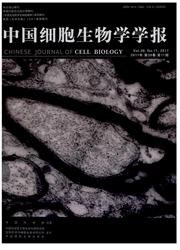

 中文摘要:
中文摘要:
炎症小体(inflammasomes)是由胞浆内模式识别受体(PRRs)参与组装的多蛋白复合物,是天然免疫系统的重要组成部分。炎症小体能够识别病原相关分子模式(PAMPs)或者宿主来源的危险信号分子(DAMPs),招募和激活促炎症蛋白酶Caspase-1。活化的Caspase-1切割IL-1B和IL-18的前体,产生相应的成熟细胞因子。炎症小体的活化还能够诱导细胞的炎症坏死(pyroptosis)。目前已经确定多种炎症小体参与了针对多种病原体的宿主防御反应,病原体也已经进化出多种相应的机制来抑制炎症小体的活化。该文总结了炎症小体在抗感染免疫研究领域的最新进展,重点讨论了炎症小体对细菌、病毒、真菌和寄生虫的识别,以及炎症小体的活化在宿主抗感染过程中所发挥的作用。
 英文摘要:
英文摘要:
As an important component of the innate immune system, inflammasomes are multi-protein complexes in the cytoplasm scaffolded by intracellular pattern recognition receptors (PRRs). Inflammasomes can be activated by sensing pathogen-associated molecular patterns (PAMPs) or host-derived danger signals, resulting in the recruitment and activation of the cysteine protease caspase-1. Activated caspase-1 is critical in the proteolytic processing of pro-interleukin- 1 β (pro-IL- 1β) and pro-IL- 18 into their mature cytokine forms, respectively. In addition, caspase-1 mediated cell death, pyroptosis, has been revealed to be an efficient mechanism for pathogen clearance. To date, multiple inflammasomes have been shown to be involved in the elimination of a growing number of microbial pathogens. In turn, pathogens have also evolved a plethora of strategies to abrogate the inflammasomes mediated immune responses. In this review we retrospect our new knowledge about inflammasomemediated recognition of microbial pathogens, including that of bacterial, viral, fungal and protozoal, as well as the favorable or unfavorable effects of inflammasomes activation in host defense.
 同期刊论文项目
同期刊论文项目
 同项目期刊论文
同项目期刊论文
 Pannexin-1 influences peritoneal cavity cell population but is not involved in NLRP3 inflammasome ac
Pannexin-1 influences peritoneal cavity cell population but is not involved in NLRP3 inflammasome ac Mycoplasma hyorhinis Activates the NLRP3 Inflammasome and Promotes Migration and Invasion of Gastric
Mycoplasma hyorhinis Activates the NLRP3 Inflammasome and Promotes Migration and Invasion of Gastric 期刊信息
期刊信息
